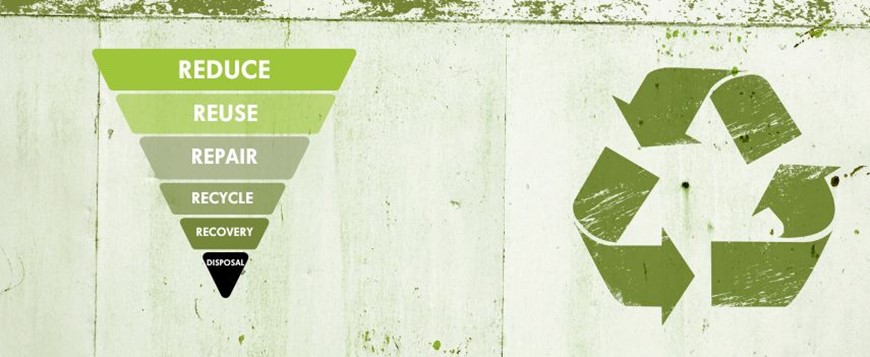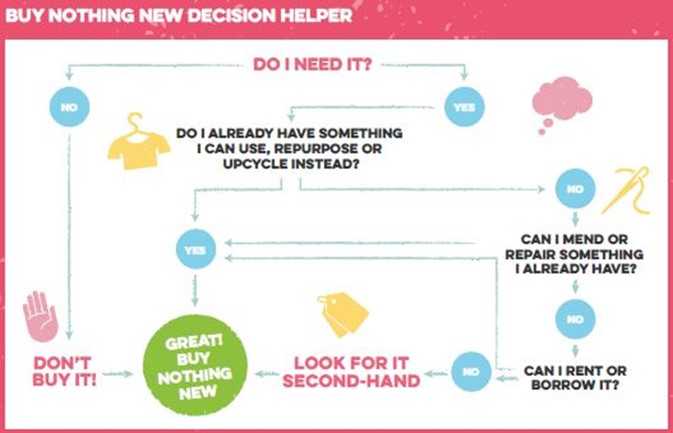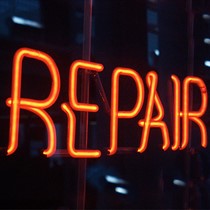The Waste Hierarchy


The waste hierarchy is scale from most preferred to least preferred in terms of how to manage waste. A recent survey by Keep Britain Tidy found that most people think that ‘waste’ only comes from what we throw away; however a good way to rethink this is that waste is ultimately created from what we buy.
Reduce 

At the top of the hierarchy, we have Reduce – which is the most preferred option. The aim is to reduce what we purchase (and therefore reduce the amount waste produced). This could be achieved by avoiding buying a product, choosing an option that requires less resources to produce or even choosing a product that has less packaging.
Try to think “do I really need to buy this?” and see what answer you get.
You can also shop at refill shops (buying items at a refill shop means no new packaging is produced). In Bucks we have some great refill shops – these can be found on our Zero Waste Map (the map is ever changing so do let us know of any new refill shops we haven’t heard of yet!)
Head over to Keep Britain Tidy to find out more about the great research they did and the campaign of ‘Buy Nothing New Month’ to encourage people to think more about their buying habits. Keep Britain Tidy have put together this diagram to help you decide if you need to make a purchase.

Reuse
At the next level we have Reuse, where an item (already in existence, or already purchased) is reused to prevent it from becoming waste. There are a number of options to consider when thinking about reuse – for example:
- renting or borrowing (there are more Library of Things springing up, to borrow tools that are used infrequently, or even clothing hire. As well as the old classic of asking your family/friends if they have an item you can borrow)
- upcycling (usually furniture – to give it a new lease of life or to fit in with new décor)
- purchasing reconditioned goods (electricals)
- rehoming second hand goods
In Buckinghamshire, as well as the traditional high street second hand/charity shops we have:
- Reuse shops at Household Recycling Centres
- Freegle
- LoveJunk
Repair 
Repair is probably the easiest level to envisage – and is simply repairing an item instead of replacing it with a new one. In Buckinghamshire there are 13 regular repair cafes, which are run by community volunteers to help repair goods, but also to help expand the knowledge of how to repair items. And a volunteer from one Buckinghamshire Café has set the repair finder – a country wide directory of repairers.
Did you know repairing 10 items has the potential carbon saving of driving over 1,000 miles (source: Farnham repair café carbon calculator).
Recycle
Recycling has expanded hugely in the last 20 years – remember taking bottles to a bottle bank (if not ask your parents). And now all sorts of mixed recycling can be done at home across the country. From paper, cardboard to plastic and glass that can all be recycled at home; to wood, metal and electricals which can be taken to Household Recycling Centres.
However – as you may have noticed ‘Recycling’ is quite far down the waste hierarchy – this is because more often that not virgin products are used to create these items in the first place. Trees for paper, and oil for plastic, so whilst recycling is better than ‘disposing’ there are still production and processing emissions in the recycling industry.
Recover
This is where electricity and gas is generated from the treatment of waste. In Buckinghamshire the waste collected from homes is sent to an Energy from Waste plant – where the process of burning the waste creates steam which is used to generate electricity.
Food recycling is sent to an Anaerobic Digestor. The food is broken down to create fertiliser for farms and electricity for homes.
Dispose
This is at the very bottom of the hierarchy and is the least preferred option. This covers all waste that cannot be ‘recovered’ and in traditional sense, is sent to landfill. Landfill sites are in decline in the UK, and in Buckinghamshire less than 0.01% of household waste is still sent to landfill (usually this will be items that cannot be sent to the incinerator such as plasterboard).
On average each household in Buckinghamshire produces 1,100 kg waste per year, and with 200,000 houses in Bucks that’s a lot of rubbish. Wouldn’t it be good if each house could reduce this amount – just by considering our purchases with the Waste Hierarchy in mind.